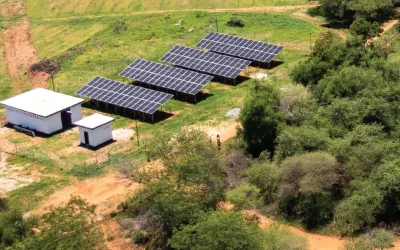Inflation targets off rails
The Reserve Bank of Zimbabwe’s quest to have annual inflation slow down to between 25- 35 percent by year-end is now off rails and will remain so if something is not done to ease inflationary pressures experienced in the last two months.
In his 2021 Mid-Term Monetary Policy Statement, RBZ governor Dr John Mangudya, revised earlier projections that inflation will close the year just below 10 percent saying the dreaded phenomenon would now close between 25 and 35 percent by end December 2021.
Dr Mangudya blamed this deviation on unavoidable shocks to international food and administered prices such as higher freight rates.
According to the RBZ boss, international food prices are expected to increase by about 25 percent in 2021 from 2020, before stabilising in 2022 everything being equal.
A pass-through of 20 percent (13 percent in the first year and 7 percent in the second) would, thus, imply an increase in consumer food price inflation of about 3,9 percentage points and 2,1 percentage points on average in 2021 and 2022, respectively for Zimbabwe. These international price shocks have since worsened and could result in a much worse negative impact than initially feared.
For instance, the price of oil this week passed US$80 a barrel for the first time in three years, at a time, because of high levies and fees, Zimbabwe already has been recording high fuel prices.
Meanwhile, food prices are surging, too, with a UN index up 33 percent over the past 12 months.
Zimbabwe still imports a significant quantity of food in finished or raw material form, soyabean, milk, rice, and wheat included.
This is unwelcome news for the Zimbabwean economy at a time when a depreciating local currency on the widely used parallel market is running amok.
From quoting 140 to the greenback a month or so ago, street money changers are now asking for between 170 and 180 for the US dollar and by year end, new records are likely to be set.
For fear of making exchange rate losses, or failing to replace their wares or just meet the costs of doing business, an estimated majority of economic players are now using the parallel market exchange rate to price their goods and services.
The result is that everything is getting costlier.
After months of slowing down, annual inflation moved up to 51,55 percent in September 2021, from 50,25 percent in August.
Month-on-month inflation for September came out at 4,7 percent, the second consecutive month inflation has come out higher than the previous month.
Experts say month-on-month inflation should stay below 3 percent if year-end targets are to be met. Judging by the month-on-month inflation outcome in August and September, progress towards a much more acceptable inflation rate is not staying on course.
According to Economist John Robertson, in a note to clients, the most destabilising feature of the past two months has been the weakening of the black market exchange rate.
While Robertson blames the runaway exchange rate on buyers of essential imports who cannot obtain money from the currency auction and are now paying almost twice as much to buy their requirements on the black market, the central bank blames it on negative sentiment, speculation, lack of confidence and rampant abuse of “mobile telecommunications services and other social media platforms to promote and facilitate illegal foreign exchange transactions and money laundering activities.”
This week, the Financial Intelligence Unit (FIU), which works under the central bank, instructed banks, mobile money operators and other financial service providers to identify and freeze any accounts operated by these individuals and, further, to bar them from accessing financial services for a period of two years, with immediate effect.
The FIU also requested the Postal and Telecommunications Regulatory Authority of Zimbabwe (POTRAZ) to bar the said individuals from operating mobile phone lines.
It’s a script that has been used before. Last year the central bank banned all mobile agent lines permanently amid allegations the lines were now being used primarily for illegal foreign exchange transactions.
Stringent transaction limits were also enforced on mobile money transactions as well as on ZIPIT.
Since then, ZIPIT users can only transfer a maximum $20 000 per day and $100,000 per month. Mobile banking transactions are capped at $5 000 per transaction and an aggregate limit of $35 000 per week.
The Zimbabwe dollar has however continued to weaken.
In spite of this week’s move by the central bank to name and shame as well as arrest promoters and facilitators of illegal foreign currency dealings, the market remains sceptic this will stop the exchange rate from free falling.
While Robertson blames limited access to foreign currency by some economic players, and the central bank blaming it on lack of confidence and indiscipline, other market watchers lay the blame solely on money supply growth.
Broad money supply (M3) was at $330,656.85 billion as at end of July up 9.15 percent from June (150 percent year-on-year) while reserve money was at $28,2 billion as at 17 September, up 55 percent from $18 billion in December 2020.
Agriculture financing, subsidies, gold buying and incentives, infrastructure payments are seen as sources of money supply growth by some.
Whatever the source of exchange rate and price instability is, the issue is holding up investment plans and keeping Zimbabwe unattractive to do business.
If a solid and long-term solution is not found soon, rising bills for consumers and companies will boost inflation and slow demand, a toxic mix known as stagflation.-eBusiness Weekly








